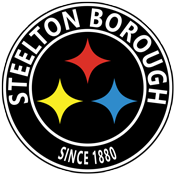Tier II DBP Violation – April 3rd, 2017
Important Information About Your Non-Emergency Public Notice
The Steelton Borough Water Authority and staff take producing the highest quality drinking water very seriously. Over the past two years, the Authority has invested heavily into infrastructure and operational improvements in response to newer and more stringent environmental testing and reporting standards.
Some residents have asked questions about the Public Notices of non-emergency violations like the one enclosed related to disinfection byproducts. Below are answers to frequently asked questions:
Important Terms:
Chlorine Contact Tank: A 250,000 gallon contact tank that will allow for the chlorination of water post-filtration thus reducing the occurrence of disinfection byproducts.
Disinfection Byproducts (DBP): Chemicals found in drinking water when disinfectants such as chlorine react with naturally-occurring materials to form byproducts. Disinfectants, like chlorine, are used to kill microbes that can cause disease (e.g. gastrointestinal illness). Long term exposures to consistently high levels of some disinfection byproducts have been associated with an increased risk of cancer.
Haloacetic Acids (HAA5): One type of DBP when consistently consumed in large quantities over a long period of time may have adverse health impacts.
Locational Running Average (LRAA): The average of the four most recent quarterly samples collected at specific sample sites. Each quarter, the LRAA is recalculated for purposes of determining compliance and the need for a public notice.
Maximum Contaminant Level (MCL): The maximum level of DBPs in parts per billion that can exist in drinking water and remain compliant with EPA standards.
Source Water: Raw water that is drawn from the Susquehanna River and treated at the Steelton Water Treatment Plant. After treatment, the water is distributed through a network of water lines to Steelton residents.
Testing Locations: Two locations chosen in consultation with DEP that historically have the highest levels of DBPs. Test sites most likely represent the worst-case reading for the system at any given time.
Turbidity: The cloudiness of raw source water. Turbidity is indicative of the amount of matter in source water and is higher when the Susquehanna River is more turbulent (i.e. during rain storms and high river levels). High turbidity many times indicates more organic matter thus higher DBPs.
Why am I receiving another drinking water violation notice?
The enclosed non-emergency notice is required due to the LRAA for Haloacetic Acids (HAA5) being higher than the maximum contaminant level at both testing locations for this quarter.
The level of DBPs depends on many factors, including temperature, weather, and source water turbidity. The more organic matter in source water the higher the occurrence of DBPs. Regardless of conditions, the Steelton Water Plant must always chlorinate water to remove immediate pathogens. This treatment process can lead to the formation of DBPs.
DBPs like HAA5s are tested for quarterly and are reported on a Locational Running Annual Average (LRAA). The LRAA for this quarter for Haloacetic Acids was .73 parts per billion for testing site 700 and .79 parts per billion for testing 701. As reference, the maximum contaminant level is .60.
Are HAA5s violations unique to Steelton’s water system?
No. Many water systems in the country are dealing with HAA5 violations due to more stringent EPA standards and changes in testing/reporting requirements. Complying with these standards requires older water system’s like Steelton’s to make long term capital improvements like the chlorine contact tank, which is currently being constructed.
Why do disinfection byproducts like HAA5s occur in our water?
Virtually all water systems have disinfection byproducts of some level due to the fact that chlorine remains the most widely used chemical for water disinfection in the world. According to the Center for Disease Control, “Chlorine revolutionized water purification, reduced the incidence of waterborne diseases across the western world,” and “chlorination and/or filtration of drinking water has been hailed as the major public health achievement of the 20th century.” It is necessary to chlorinate water to eliminate bacteria that causes immediate emergency health risks. No such emergency health risks are occurring due to Steelton’s continued treatment of water.
While chlorination kills harmful pathogens in water (the primary concern of water treatment facilities), the process of chlorine interacting with organic material in water creates what are known as disinfection byproducts, primarily Trihalomethanes and Haloacetic Acids. While operational methods continue to be maximized, the Steelton Water Plant has limited ability to chlorinate water post-treatment, meaning it has less ability to control DBP/chlorine interaction. The Chlorine Contact Tank will address this.
It is recognized that the removal of immediate pathogenic threats in water through chlorination takes first priority. Higher levels of disinfection byproducts are considered a Tier II non-acute violation (like the one enclosed). A lack of chlorination and the resulting microbial pathogens that would be present in water, represent a Tier I emergency violation.
Am I required to buy bottled water?
No. The Department of Environmental Protection and EPA clearly state that you do not need to change your source of water.
What if I have concerns about long term health risks associated with HAA5s?
Please consult your physician if you have any concerns about health risks associated with HAA5s.
What is the Water Authority doing to reduce/eliminate DBPs?
Construction of the Chlorine Contact Tank commenced in February 2017. The tank is slated to be complete by Fall of this year. The chlorine contact tank will allow for the chlorination of water post treatment as opposed to chlorinating raw water. This allows greater control over chlorine interaction with DBPs.
The Authority is also working with its engineers and experts at Penn State University to finalize new, advanced treatment techniques to supplement the chlorine contact tank.
If you have any additional questions about disinfection by-products or what we are doing, and have done, to ensure your drinking water is safe, please feel free to contact me at 717-939-9842 or Mark Handley at 717-939-0425 Ext. 5110.
Douglas E. Brown, Borough Manager and Authority Secretary
